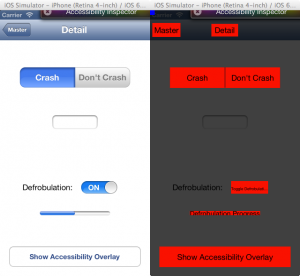This afternoon, I went to visit War Remains, Dan Carlin’s VR Theater experience focused on World War I. Dan is, of course, the voice of the immensely popular podcast “Hardcore History,” in which he recounts historical events with unparalleled approachability and empathy. While he has previously shared remarkable accounts of “The War to End All Wars” in his podcast, his latest endeavor brings parts of that era to life in a more visceral way than he’s ever managed before.
Carlin narrates the whole experience, which starts with the viewer being teleported to a gondola hanging beneath an observation balloon while aircraft wheel around and anti-aircraft fire erupts. In addition to the immersive audio and video one expects with VR, the viewer is also treated to a breeze whipping by while the floor wobbles beneath.
From there, we move to a trench on the front lines, where you watch a group of soldiers succumb to the “meat grinder” of incoming fire. We take shelter in a bunker, where we can see (and feel) medical bags, a morse radio, and various other bits of paraphernalia while shells burst around, shaking the floor and the walls. Passing through a door and pushing the dangling hand of a corpse aside yields another segment in the trenches, rounding out the experience while tanks roll past and shells crash around. Finally, poison gas begins to fill the trench and the scene fades, yielding to Carlin’s meditation on the modern-day world as a product of a battle-scarred generation while stylized bombs descend in slow motion all around.
From a storytelling perspective, the experience is remarkable. VR is often called an “empathy engine,” and this was one of the most effective uses of that capacity I have seen. The physical augmentation — wobbly floors, props, shuddering walls, the feel of the breeze playing across your face — engages the whole brain in a way that merely audio/visual VR cannot. And recruitment posters along with the scale and eye chart one would find in a recruitment office all get visitors into the appropriate mindset before they even enter VR.
My only complaint was that the experience felt about half the length I would have liked, both from a storytelling perspective and from a “getting your $45 worth” point of view. There was little narrative arc beyond “Holy moley, World War I was scary.” But given that it is genuinely pushing the boundaries of digitally augmented media and puts its brief message across with unparalleled force, the brevity is forgivable.
One change that would have made the experience even more immersive would have been meaningful interaction with the scenes. In each portion of the experience, the viewer is merely an observer: not quite a disembodied ghost, but not able to affect the scene in any meaningful way. Imagine adding a tracked gun that would allow the visitor to engage some of the advancing infantry lines, or a grenade being tossed into the trench that you would have to pick up and throw back before it detonates. VR allows for rich, non-linear storytelling, so having the experience be essentially “on rails” is something of a missed opportunity.
From a technical standpoint, the experience was fascinating. While the whole physical space was a square about 25 feet on a side, the creators use that real estate very effectively; the only time one feels particularly constrained is in the bunker, where it’s absolutely appropriate. The experience relied on a Vive headset with a PC in a satchel slung over the visitor’s shoulder and the 2.0 version of the Vive Trackers. There were no controllers in use — all of the interactions were done physically with props that were secured in place at various places around the set.
If you’re a fan of VR, Dan Carlin, or World War I, I would highly recommend the experience as a unique way to feel what it was like to fight in The Great War. War Remains is available for viewing in downtown Austin through the end of the month. Buy tickets here: https://www.warremains.com


